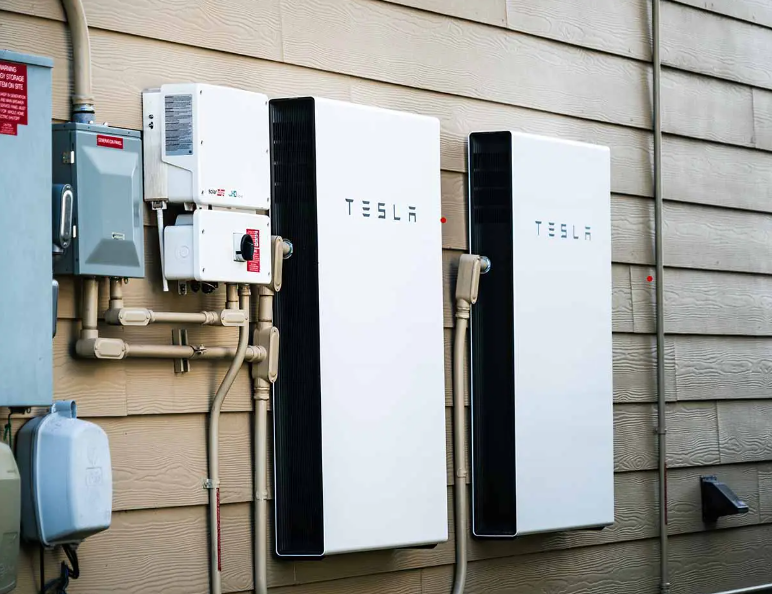
The global electric car and storage monolith Tesla is getting ready to take on Australia’s legacy utilities in what would be a landmark move for the local grid and for consumers, and potentially disruptive for the incumbent industry.
Tesla’s plans for Australia are believed to be broadly based on its model in Texas, where it has launched Tesla Electric, and which targets consumers who have either a Powerwall home battery, or a Tesla EV, or both.
Tesla already has licences to operate its “virtual power plant” in South Australia, and to work with retailer Energy Locals in providing a VPP-type offering in other parts of the main grid.
But new applications, lodged with the Australian Energy Market Operator, and for a retail licence with the Australian Energy Regulator, signal a much broader remit, like its newly launched business in Texas, and preparations for a similar move in the UK.
“Tesla Electric is a retail electricity provider that allows you to power your home, vehicle and community with sustainable electricity from Tesla,” the company says on its website about its Texas offering.
“Our plans give you access to the energy you need when you need it at a predictable cost — and reward you for supporting your community’s transition to sustainable energy. To join, you must own a Tesla vehicle or Powerwall and live in an area of Texas that allows you to choose your electricity provider.”
The move is significant for a number of reasons, and is a welcome one given the renewed focus on consumer energy resources (CER), and how to “orchestrate” the rooftop solar, household batteries and EVs of consumers to help fill the gap created by the mass exit of Australia’s ageing coal fired generators.
The debate over the closure timing of the country’s biggest coal generator, the 2.88GW Eraring facility in NSW, has led the Australian Energy Market Operator and the NSW government to underline the importance of CER (or DER, distributed energy resources) in managing the transition.
Tesla does just that. In a submission to the AER last year – unrelated to its licence application – it underlined the important role of VPPs and EVs. Tesla, of course, is the largest supplier in the world of both battery storage, and electric cars.
“Orchestrated DER can be used to provide valuable market and network services (e.g. frequency control ancillary services, fast frequency response, inertia, voltage support, peak demand reduction and a variety of other new and emerging services),” it wrote in its submission.
“Orchestrated DER can also be optimised to respond dynamically to network and market signals to ensure that system operations are supported.”
It further notes that the ability for the industry to make the shift from passive to active DER is dependent on customers being incentivised to hand over control of ‘their’ DER.
And it will also be dependent on operators, aggregators, and service providers investing in the engineering development for products, platforms and optimisation software.
Tesla is considered to be far more advanced than its rival car makers, storage developers and legacy utilities on all those fronts. It has led the development of big battery storage in Australia, including in advanced grid-forming inverters, and dominates the Australian EV market, with around 60 per cent of all EV sales to date.
It can also combine its offering with home charging and fast charging options through its Supercharger network, including discounts on fast-charging and fixed fees on home charging, as well as various tariff and control options through a home battery.
In a recruitment drive in the UK, ahead of the launch of Tesla Energy there, the company highlighted its intention to disrupt the status quo, and the legacy utility business, as it has done in the global car market.
It said it was looking for a new executive “with a healthy scepticism of the status quo” to manage the company’s entry into the UK market, and made clear it was aiming to “support the transition of the entire electricity grid to 100% renewables”.
Jon Sibley, an executive with enX, noted in a LinkedIn post that Tesla, through its Tesla Energy Ventures subsidiary, has also applied for registration with the market operator as a market customer.
He noted this could be related to managing the load for its Supercharging assets, and it is also the same class of registration used for scheduled loads and electricity retailers.
Others noted its significance. “Interesting times ahead,” said Toby Roxborough, a zero emission energy and transport specialist.
“Another wave of disruption ahead with a vertically integrated provider running energy services for self/C&I clientele,” noted Neeraj Bhagwatula, the head of e-mobility at Enel X.
Tesla did not respond to requests for comment.